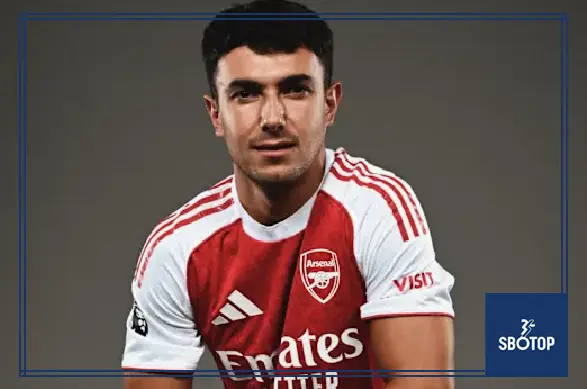In a summer transfer window dominated by big-money deals and high-profile sagas, one of the most tactically significant moves flew largely under the radar. Martin Zubimendi, Spain’s cerebral midfield anchor, officially joined Arsenal in June 2025 in what many are calling a masterstroke by manager Mikel Arteta. Unlike the flashy unveilings of global superstars or bidding wars that dominate headlines, Zubimendi’s move was quiet, calculated, and purposeful.
Yet make no mistake—this is no mere squad reinforcement. Zubimendi could be the key that unlocks Arsenal’s long-awaited return to Premier League dominance and Champions League contention. With the departure of Thomas Partey and Granit Xhaka’s influence waning, Arsenal were in need of a midfielder who could offer both structure and intelligence at the base of their system.
Zubimendi brings all of that and more. This article explores his journey from La Real to North London, examines the tactical impact he brings, dissects Arsenal’s evolving midfield identity under Arteta, and explains why this understated transfer could shape the Gunners’ 2025 glory push.
From San Sebastián to North London Zubimendi’s Journey So Far
Born in Donostia-San Sebastián in the Basque Country, Martin Zubimendi rose through the youth ranks of Real Sociedad—one of Spain’s most respected talent incubators. Debuting in La Liga at age 20, he quickly established himself as a reliable defensive midfielder with an eye for progression and an uncanny ability to read the game.
Over the following seasons, Zubimendi’s reputation grew steadily. Unlike more explosive Spanish midfielders, he doesn’t dazzle with flicks or long-range screamers. Instead, his influence lies in his positional awareness, press resistance, and calm distribution under pressure.
By 2022, Barcelona and Bayern Munich were both circling, but Zubimendi remained loyal to his boyhood club. That loyalty allowed him to mature without the glare of superclub expectations, accumulating over 150 appearances for La Real by 2025 and becoming a fixture in Luis de la Fuente’s Spain midfield setup.
What stood out throughout his rise was his discipline. He rarely lost possession, committed few fouls, and displayed a remarkable consistency even in high-stakes matches—traits that drew Arteta’s admiration and ultimately Arsenal’s pursuit.
Why Arsenal Targeted Zubimendi Strategic Fit over Flash
Mikel Arteta’s project at Arsenal has always been about the long game. While other Premier League clubs chase marquee names, Arteta and sporting director Edu Gaspar focus on acquiring players with specific tactical roles and the mentality to thrive under pressure.
Zubimendi fits this philosophy perfectly.
After years of relying on the physical prowess of Thomas Partey and the aggressive box-to-box tendencies of Granit Xhaka, Arteta sought a midfield pivot more in the mold of Rodri—someone who could dictate tempo, break opposition transitions, and offer press resistance in tight areas. The initial experiments with Declan Rice as a No. 6 produced mixed results, often limiting his ability to influence games higher up the pitch.
Zubimendi solves that conundrum. He allows Rice to move forward, functioning more like Ilkay Gündoğan did for Manchester City—arriving late into the box, linking play, and recovering possession higher up the pitch. In Zubimendi, Arsenal have finally found their tempo-setter.
Reports suggest Arsenal triggered Zubimendi’s release clause, believed to be in the region of €60 million (£51.3m), a fee that appears shrewd when compared to recent inflated market prices for central midfielders.
Tactical Profile What Zubimendi Brings to Arsenal’s Midfield
- Positional Intelligence
Zubimendi excels at understanding spatial dynamics. He rarely strays too far from his defensive responsibilities, providing a stable base during both possession and transition phases. His ability to cover zones allows Arsenal’s full-backs and advanced midfielders more license to roam.
- Press Resistance
One of his defining traits is his composure under pressure. Whether he’s receiving the ball facing his own goal or surrounded by opposition pressers, Zubimendi maintains calm and typically finds progressive options. His one-touch passing in tight spaces often breaks pressing traps.
- Defensive Structure
Though not a physical destroyer like Casemiro or Ndidi, Zubimendi reads danger early and positions himself to intercept rather than chase. His interception numbers in La Liga consistently ranked among the top five for defensive midfielders over the past three seasons.
- Passing Variety
While his role doesn’t require Hollywood passes, Zubimendi offers a wide range of distribution—short, quick combinations to maintain possession, and longer diagonal switches that open up space. His pass completion rate over the past two seasons hovered around 91%.
- Mentality and Discipline
Rarely booked and never overawed, Zubimendi is the kind of midfielder who leads by quiet example. He’s not a vocal general, but his consistent performances offer psychological security to those around him.
The Arteta Blueprint Zubimendi as the Missing Piece
Mikel Arteta has spent four seasons sculpting Arsenal into a modern, possession-dominant force. While the 2022–23 and 2023–24 seasons showed promise—with top-two Premier League finishes—Arsenal lacked the midfield control to dominate elite opponents consistently.
Too often, big games hinged on Arsenal losing their rhythm once the midfield came under sustained pressure. Rice, though exceptional, was being stretched between shielding and progressing. Now, with Zubimendi installed at the base, the roles are clearer:
- Zubimendi holds the deepest line, recycles possession, breaks counters.
- Rice plays as a left-sided No. 8, arriving late in the box, winning duels higher up.
- Martin Ødegaard, the right-sided No. 8/10 hybrid, retains creative freedom without needing to drop too deep.
This equilibrium allows Arsenal to control more matches through midfield dominance, a hallmark of every title-winning team in Europe.
Early preseason glimpses have shown Zubimendi adapting quickly, seamlessly integrating into Arteta’s structure. The Spaniard’s understated style complements the dynamic profiles of Bukayo Saka, Gabriel Martinelli, and Kai Havertz, giving them a more stable foundation to express themselves.
From Quiet Signing to Title Catalyst
While much of the media buzz this summer has focused on Manchester City’s blockbuster pursuit of Xavi Simons or Liverpool’s rebuild under Arne Slot, Zubimendi’s arrival could prove to be the most influential transfer of the window by May 2026.
If Arsenal are to win their first Premier League title in two decades or make a serious push in the Champions League, they need more than flair—they need composure, balance, and structure in midfield. Zubimendi provides all three.
Moreover, his move represents a shift in Arsenal’s recruitment philosophy: moving from “potential” to “prime.” Zubimendi is 26—right at the intersection of experience and peak performance. He doesn’t need adaptation time or development. He’s ready.
Also Read:










